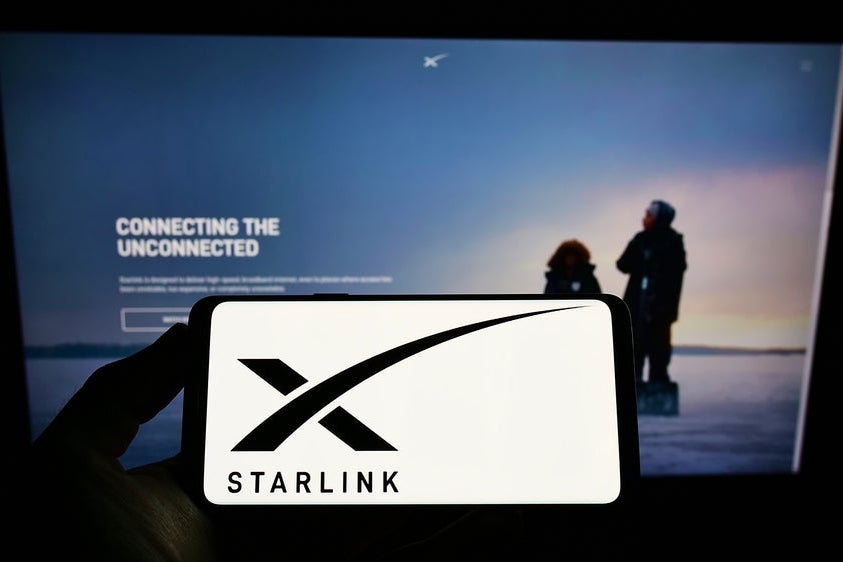Sky Wars: The Rise of Europe’s Starlink Competitor
As geopolitical dynamics shift, the emergence of a new European satellite internet provider has taken center stage, particularly in light of recent changes in U.S. aid to Ukraine. In a region grappling with conflict and connectivity issues, this competitor has experienced a staggering stock increase of over 600%, signaling a significant move in the ongoing battle for satellite internet supremacy. This article explores the implications of these developments, the nature of the competition, and what it means for consumers and businesses alike.
The Geopolitical Landscape and Its Impact on Connectivity
In recent years, the geopolitical landscape in Europe has been tumultuous, especially with the ongoing conflict in Ukraine. As the situation evolves, the necessity for reliable communication and internet access has never been more critical. The reliance on satellite internet services has surged, as traditional infrastructure is often vulnerable in conflict zones.
The U.S. has been a longstanding ally of Ukraine, providing military and financial aid. However, changes in this support have prompted European nations to seek alternative solutions to maintain connectivity and ensure that civilians and businesses can communicate effectively. This backdrop has paved the way for Europe’s new satellite internet provider to step up and fill the void left by fluctuating U.S. support.
The Rise of the European Satellite Provider
In the wake of increased demand for satellite internet, a European company has emerged as a formidable competitor to Elon Musk’s Starlink service. With its innovative technology and strategic focus on regions impacted by conflict, this provider is making significant inroads into the market.
- Innovative Technology: The European provider utilizes advanced satellite technology that promises higher bandwidth and lower latency, making it an attractive option for users seeking reliable internet connections.
- Strategic Partnerships: By forming alliances with local governments and NGOs, the company is enhancing its reach and ensuring that its services are accessible to those who need them most.
- Focus on Affordability: Unlike some competitors, this provider aims to keep its services affordable, particularly for users in conflict zones where economic stability is fragile.
This combination of technological innovation, strategic partnerships, and a focus on affordability has led to an impressive rise in the company’s stock, showcasing investor confidence in its potential to challenge established players like Starlink.
Comparing Starlink and Its European Competitor
As the competition heats up, it’s essential to compare the strengths and weaknesses of both Starlink and the new European provider. While Starlink has established itself as a leader in the satellite internet market, the newcomer is leveraging its unique position to offer distinct advantages.
- Coverage: Starlink boasts extensive global coverage, yet the European provider focuses predominantly on regions affected by geopolitical tensions, offering tailored solutions for those particular markets.
- Speed and Latency: Users have reported variable speeds and latency with Starlink, particularly in congested areas. The European provider claims to provide consistent speeds and lower latency, which could be crucial for users in critical situations.
- Customer Support: The European company has emphasized customer support, aiming to provide localized assistance to users, something that has been a pain point for some Starlink users.
These differences could play a significant role in shaping consumer preferences, especially among those in areas where reliable communication is a matter of urgency.
The Economic Impact of Sky Wars
The rise of this European competitor is not just a story of technological advancement; it also has substantial economic implications. As the company continues to grow, it is poised to create jobs, stimulate local economies, and foster innovation within the satellite internet sector.
- Job Creation: With the expansion of its operations, the European provider is likely to create numerous jobs in engineering, customer service, and support roles.
- Boosting Local Economies: By providing reliable internet access, businesses in conflict-affected areas can thrive, contributing to economic recovery and stability.
- Encouraging Competition: The entry of a new player into the market promotes healthy competition, which can lead to better services and pricing for consumers across the board.
As such, the “Sky Wars” are not merely about who provides the best internet service; they reflect a broader economic strategy that could reshape the digital landscape in Europe.
Future Outlook: Opportunities and Challenges
Looking ahead, the future for Europe’s satellite internet provider seems promising, yet not without its challenges. The geopolitical environment remains fluid, and the company must navigate various hurdles to achieve sustained growth and market presence.
- Regulatory Hurdles: Operating across multiple countries will require compliance with various regulations, which can be complex and time-consuming.
- Technological Advancements: The fast pace of technological innovation means that the company must continuously invest in research and development to stay competitive.
- Consumer Trust: Building trust among users in regions with historical skepticism towards foreign companies will be crucial for long-term success.
However, the opportunities presented by increased demand for satellite internet in conflict zones, coupled with the growing recognition of the importance of connectivity, position the European provider well for future success.
Conclusion: A New Era of Connectivity
As the world witnesses the rise of Europe’s Starlink competitor amidst ongoing geopolitical tensions, the implications for connectivity, economy, and consumer choice are profound. With its innovative approach and commitment to serving underserved regions, this satellite internet provider is not just a competitor but a potential game-changer in the industry.
The “Sky Wars” signify a shift in how satellite internet can be leveraged to address pressing communication needs in times of crisis. Whether this new player will ultimately dethrone Starlink remains to be seen, but one thing is certain: the fight for connectivity is just beginning, and consumers stand to benefit in ways that were previously unimaginable.
See more Future Tech Daily

